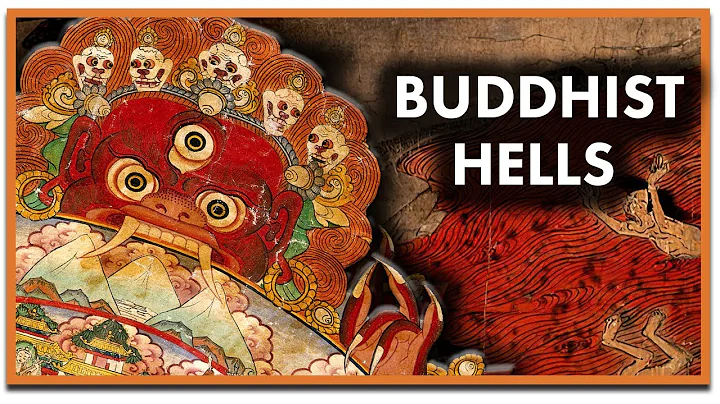There is a museum in Famen Temple in Fufeng County, Shaanxi Province. The Famen Temple Museum treasures all kinds of Buddhist relics, and the most precious and special cultural relics are all "Buddha's finger relics".

Buddha finger relic refers to the finger relic of Sakyamuni Buddha. More than two thousand years ago, after the founder of Buddhism, Sakyamuni, was cremated by his disciples after Nirvana, and many different shapes of Buddha bones relics appeared. The Buddha relics were pagodas set up by rulers of many countries to offer. Due to historical reasons, the Buddha finger relic finally flowed to China and was invited to the Famen Temple in Shaanxi for worship.
Now we are lucky enough to see the "Buddha finger relic" in the Famen Temple Museum. First of all, we must be grateful for Master Shi Liangqing's dedicated support. It is precisely because of his commendable courage and sacrifice his life to repay the Buddha's sons who have the opportunity to witness Sakyamuni's Buddha finger relic.

1896, Shi Liangqing was born in a rural family in Yanshi County, Henan Province, commonly known as Qi Jinrui . He has been talented and sensible since childhood. Due to his poverty, he studied in a private school intermittently for several years.
For most children, childhood is joyful and carefree. But Master Liangqing is different. His fate is bumpy. He suffered hardships when he was young. He started working odd jobs at the age of eight or nine to make a living. He worked so hard every day that he still earned less than a lot of money.
Master Liangqing 's mother is a devout Buddhist. Every day on the 1st and 15th day of the lunar month, the loving mother would always take him to the temple to burn incense and worship Buddha. Over time, Master Liangqing planted Bodhi seeds in the eight consciousness fields since he was sensible.
1906, Shi Liangqing, who was ten years old, felt deeply that his life was short. He was ordained at Lingshan Temple in Yiyang County, Henan Province and became a monk and studied under the old monk Yinchuan. He was given the name Yongguan and his courtesy name was Liangqing.
According to the Buddhist regulations, you cannot take precepts as a monk under the age of eighteen. Therefore, Shi Liangqing regarded himself as "小时 " and had no chance to learn Buddhism with fellow practitioners. He could only engage in miscellaneous work in the temple.
At a young age, you have to do adult work. You work from sunrise every day and eat when you enter and rest. Life is very hard. Sometimes you come back a little late when you come back from work. The food in the vegetarian hall was eaten up by the monks, so you have to endure hunger.
No matter how difficult life is, Shi Liangqing has never complained. He worked hard in the temple, endured what ordinary people could not tolerate, and tolerated what ordinary people could not do. Because of his hardworking and capable work and outstanding performance, the old monk Yinchuan valued him very much.

1919, the old monk Xinkong held a precepts ceremony at Lingshan Temple , and there were endless monks coming to take the precepts. Shi Liangqing felt that the time was ripe, so he took the precepts under the seat of the old monk Xinkong and became a qualified monk. After the
practice of precepts was completed, he assisted the old monk Yinchuan to do some teachings. During this period, he worked diligently and worked hard, and successively went to the supervisory institute from Zhike, Vina and other positions. The old monk Yinchuan trusted him very much.
The new official took office for three fires, which verified Shi Liangqing. Since serving as the supervisory institute, Shi Liangqing tried to cheer up. On the one hand, he built a temple and on the other hand, he strictly enforced the temple rules, scolding the monks to set an example, follow the precepts, and be honest in doing practical things for all living beings.
Under his strict leadership, the Lingshan Temple where he is located is strict in style, monks have monks and temple rules, and the number of permanent residents has increased to more than fifty. The old monk Yinchuan believed that he had the ability to take on great responsibilities, so he retired and handed over Lingshan Temple to him to take care of.

1931, Master Shi Liangqing was invited by the abbot of Liuyun Temple in Shanghai, and Master Shi Liangqing lived in Baima Temple in Luoyang, Henan Province. He served as the West Hall, Back Hall, Supervisory Court, and Abbot of Baima Temple. After more than ten years, it has revitalized the strict Taoist style of White Horse Temple, restored many buildings in the temple, and the special experience of preaching and teachings has influenced countless believers.
After the victory of the anti-Japanese war, Master Shi Liangqing returned to Lingshan Temple to spread the Dharma and preach, and then went to Zhenjiang Jinshan Temple, Zhejiang Putuo Mountain , Zhongnan Mountain South Wutai and other places to travel. Wherever he goes, Master Liangqing will start to preach the scriptures, which will neatly imitate sentient beings, and his profound reputation and influence are very wide, and everyone praises it.
1953, Chinese Buddhist Association was established in Beijing. Master Liangqing was invited by the Shaanxi Buddhist Association to serve as the abbot of the Famen Temple in Fufeng County.At that time, the temple had famous monks such as Chengguan, Huiming, Changhui, and Xinru. Master Liangqing performed outstandingly in Famen Temple, built temples and made good friends, and the temples were becoming more and more prosperous.

Famen Temple was first built during the Huanling period in the late Eastern Han Dynasty and is known as the "ancestor of the Guanzhong Pagoda Temple". Before Zhou and Wei dynasties, Famen Temple was called " Ashoka Temple ", and was renamed "Chengshi Taoist Temple" when Emperor Wen of Sui , and was renamed "Famen Temple" when Emperor Gaozu of Tang Dynasty. Famen Temple is known as a royal temple. It has become a Buddhist holy place that the whole country looks up to because of its placement of the finger bone relics of Sakyamuni Buddha.
Since Shi Liangqing became the abbot, the building of the Famen Temple was greatly repaired and the incense began to become prosperous. Believers from all directions came to see him. On the one hand, they listened to Master Liangqing's lectures, and on the other hand, they pointed to the relics of Buddha. But no one expected that the world-famous Famen Temple would become the last destination of Master Shi Liangqing.
In 1966, Buddhism suffered a major change, and Famen Temple was looted by rebels, and cultural relics were seriously damaged, and monks were ordered to return to secular life. The rebels visited Famen Temple many times to dig out the underground palace of the temple-the Buddha's true body relic pagoda. Master Liangqing stepped forward and ignored his situation and had repeatedly tried to persuade him, and suffered a lot of injuries.
However, no matter how dissuades, it will be useless. The rebels still forcefully dig out Famen Temple underground palace and destroy the Buddha's finger relics. In order to show his determination to protect the temple, Master Liangqing made an unimaginable statement. He piled up a lot of firewood in the courtyard and stood on it and shouted loudly: If you dig up the underground palace and destroy the Buddha's finger relics, you might as well burn me first.

The destroyer thought he was just scaring, and ignored it and continued to dig out the underground palace to destroy the Buddha's finger relics. At this time, Master Liangqing knew that the form was not good, so he personally lit the firewood and sat upright on it. After a while, a raging fire ignited. Master Liangqing chanted the Buddha's name motionlessly, and the fire covered him all. Master Liangqing passed away peacefully in the fire.
At this time, the destroyers were frightened and their legs were weak. They never thought that Master Liangqing would sacrifice his body in order to protect the Buddha's finger relics. They stopped the excavation tools in their hands and immediately withdrew from the Famen Temple. The underground palace of Famen Temple has not been dug up, and the Buddha's finger relics are intact. Master Liangqing's deeds of burning himself to defend Buddhism shocked the Chinese Buddhist community.
After Master Liangqing passed away, his disciple Zhang Zhenghua, a layperson, was heartbroken and cried loudly. He collected his remains piece by piece and sent them to Xianshan Temple for custody. Then, Wu Qi Lao and other good teachers were sent to Shangtianchi Temple in Zhongnan Mountain for burial. Master Liangqing forgot his body for the Dharma, and his spirit is commendable. He was later called a famous Buddhist martyr. After the implementation of the religious policy, Famen Temple was restored, but due to the years of rain, the Pagoda of the Great Sage's True Body collapsed. In 1987, an excavation of the Baota Underground Palace by the Shaanxi archaeological team and discovering Buddha finger relics and other cultural relics. Therefore, a museum was established in Famen Temple as a treasure. Later, in order to commemorate the merits of Master Liangqing's protection of the tower, people built a memorial pagoda at Famen Temple.
Buddha refers to the relics as auspicious holy object of Buddhism, symbolizing the prosperity and prosperity of Buddhism. Sakyamuni Nirvana has a history of more than two thousand years. It is not easy for Buddha to preserve relics intact until now. Today, we are destined to be able to admire the Buddha's finger relics at Famen Temple. We should be grateful to Master Liangqing for his contribution to the protection.







![[English] Who Am I - Lecture 1 - Ven. Guan Cheng - DayDayNews](https://i.ytimg.com/vi/KU0fUs2It5o/hq720.jpg?sqp=-oaymwEcCNAFEJQDSFXyq4qpAw4IARUAAIhCGAFwAcABBg==&rs=AOn4CLDFpQUN_QwRfC7bmP4sUadq-RcYdg)
![A Moving Masterpiece 清明上河图 [English narration] - DayDayNews](https://i.ytimg.com/vi/kxff-4GktOI/hqdefault.jpg?sqp=-oaymwEcCOADEI4CSFXyq4qpAw4IARUAAIhCGAFwAcABBg==&rs=AOn4CLBtHGLeUpJNCYDJYnZTuISQ1N5Vag)


